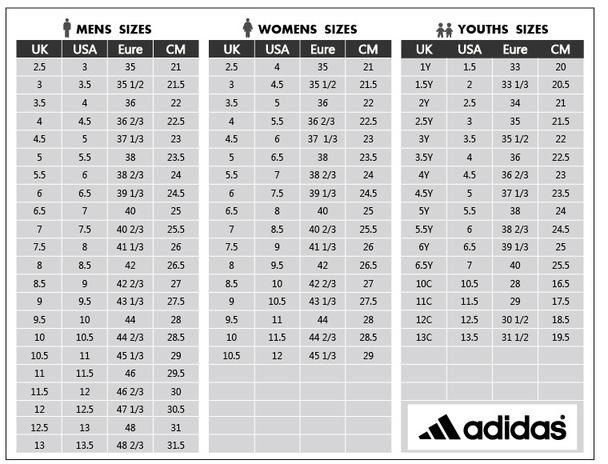Kids Shoes Size to Women's Equivalent

When it comes to finding the right shoe size, it can be particularly challenging for parents trying to determine the equivalent women’s size for kids’ shoes. This is because shoe sizes can vary significantly between brands and styles, and the difference between kids’ and women’s sizing can be somewhat confusing. Understanding how kids’ shoe sizes translate to women’s sizes is essential for ensuring a proper fit, especially since poorly fitting shoes can lead to discomfort, pain, and potentially even foot problems.
To navigate this, it’s helpful to have a comprehensive guide that can assist in converting kids’ shoe sizes to their women’s equivalents. Generally, kids’ shoe sizes are categorized into two main groups: junior sizes for older kids and youth sizes for younger children. The conversion from kids’ to women’s sizes typically starts from a kids’ size 4, considering that sizes 1-3 are usually too small for an adult foot. However, it’s crucial to remember that shoe size conversions can be approximate due to the differences in foot shape and size from one individual to another.
Understanding Kids’ to Women’s Shoe Size Conversion
The conversion process often starts with the assumption that a kids’ size 4 is roughly equivalent to a women’s size 6. From there, the conversion can proceed with the understanding that each kids’ size increment corresponds to a half-size increment in women’s sizing. This means:
- Kids’ size 4 equals women’s size 6
- Kids’ size 4.5 equals women’s size 6.5
- Kids’ size 5 equals women’s size 7
- Kids’ size 5.5 equals women’s size 7.5
- And so on, increasing by half a size in women’s for every half size increase in kids.
However, this is a general guideline and can vary significantly depending on the brand, the specific style of the shoe, and the individual’s foot shape and size. Some brands may run larger or smaller than others, which can affect the accuracy of these conversions.
Factors to Consider in Shoe Size Conversion
Brand Variability: Different brands have different sizing standards. What might be a size 6 in one brand could be a size 5.5 or 6.5 in another. This variability makes it essential to try on shoes or consult the brand’s sizing chart when possible.
Style Differences: The style of the shoe can also impact sizing. For example, sneakers might fit differently than boots or sandals due to differences in design, material, and intended use.
Personal Fit Preferences: Some people prefer their shoes to fit more snugly, while others like a bit more room. This personal preference can influence how sizes are perceived and converted.
Foot Shape: The shape of one’s foot, including aspects like toe length, arch height, and heel width, can significantly affect how well a shoe fits, regardless of the size.
Practical Tips for Finding the Right Fit
Try Before You Buy: Whenever possible, try on shoes before purchasing, especially if you’re converting from kids’ to women’s sizes. This ensures the best fit and can help avoid the hassle of returns.
Use Sizing Charts: Most brands provide sizing charts on their websites. These can be incredibly useful in determining your size based on measurements.
Consider Width: Besides length, the width of the shoe is crucial for a comfortable fit. Some brands offer wide or narrow options, which can make a significant difference.
Be Prepared for Variability: Understand that there might be some trial and error involved in finding the perfect size, especially when converting between kids’ and women’s sizes.
Conclusion
Converting kids’ shoe sizes to women’s equivalents requires a combination of understanding general conversion guidelines, being aware of the factors that can affect sizing, and taking practical steps to ensure the best fit. While there’s no one-size-fits-all approach, by considering these elements, individuals can navigate the sometimes complex world of shoe sizing with more confidence. Remember, the goal is not just to find a size that matches a chart but to discover a shoe that fits comfortably and supports the health and happiness of your feet.
How do I know my kids' shoe size in women's equivalent?
+To find your kids' shoe size in women's equivalent, you can use a general conversion chart. Typically, a kids' size 4 is equivalent to a women's size 6, and for every half size you go up in kids', you go up half a size in women's. However, it's essential to try on shoes or consult a brand's sizing chart for the most accurate fit.
Do all shoe brands convert sizes the same way?
+No, different brands can have slightly different sizing standards. What might be a size 6 in one brand could fit like a 5.5 or 6.5 in another. It's always a good idea to check the sizing chart for the specific brand you're interested in.
How can I ensure the best fit when converting kids' to women's shoe sizes?
+To ensure the best fit, try on shoes whenever possible, consider the width of the shoe in addition to the length, and be prepared for some variability between brands and styles. Using a brand's sizing chart and reading reviews from other customers can also provide valuable insights.
Expert insight suggests that while converting kids' shoe sizes to women's equivalents can be helpful, it's crucial to prioritize the fit and comfort of the shoe over the size label. Everyone's foot shape and size are unique, and what works for one person may not work for another. By combining conversion guidelines with practical fit considerations, individuals can find shoes that not only match their size needs but also provide the comfort and support required for daily activities.
In conclusion, navigating the world of shoe sizes, especially when converting between kids’ and women’s sizes, requires a nuanced approach that considers both general guidelines and individual preferences. By being informed and taking the time to find the right fit, anyone can enjoy comfortable, well-fitting shoes that enhance their daily life.



